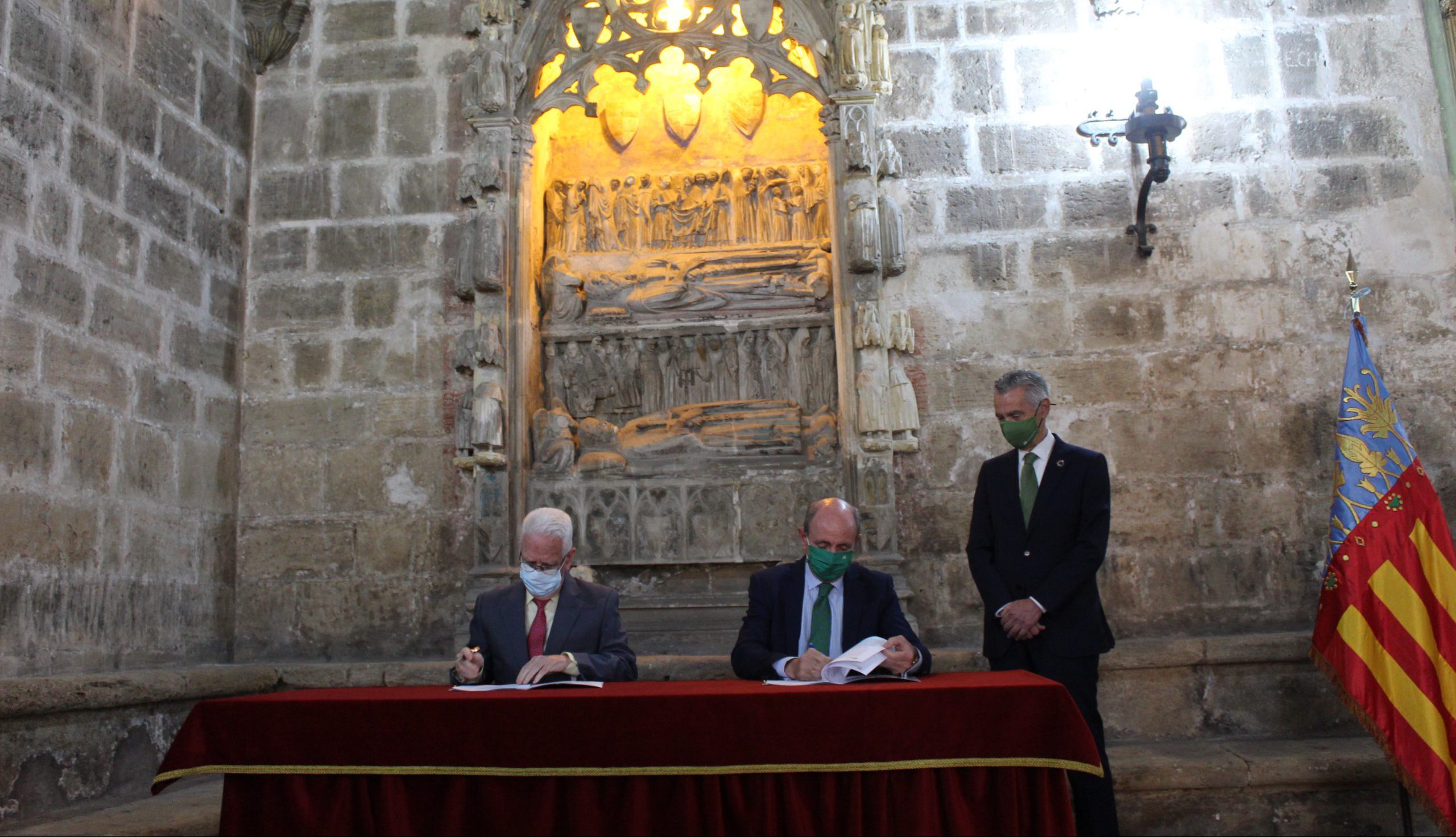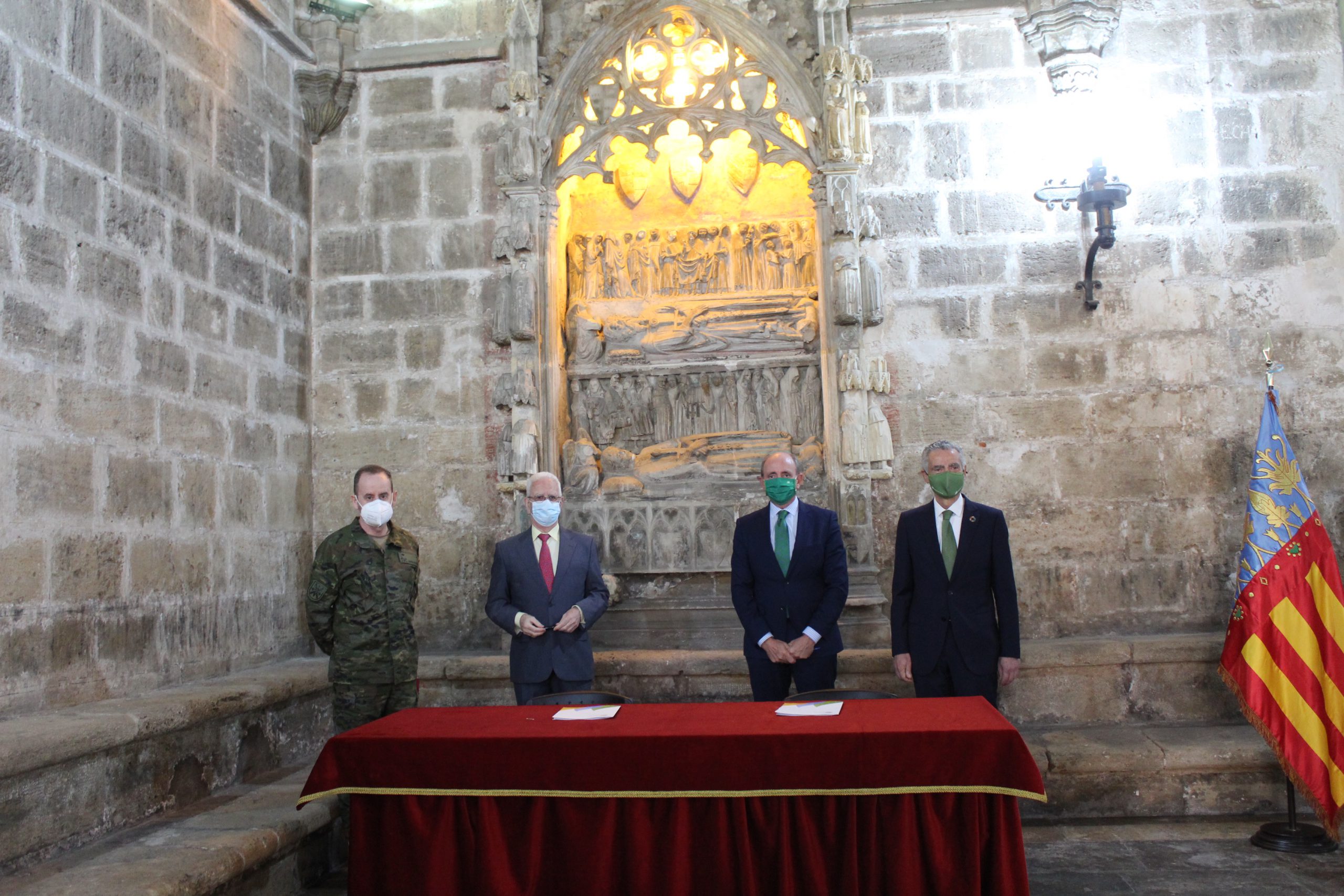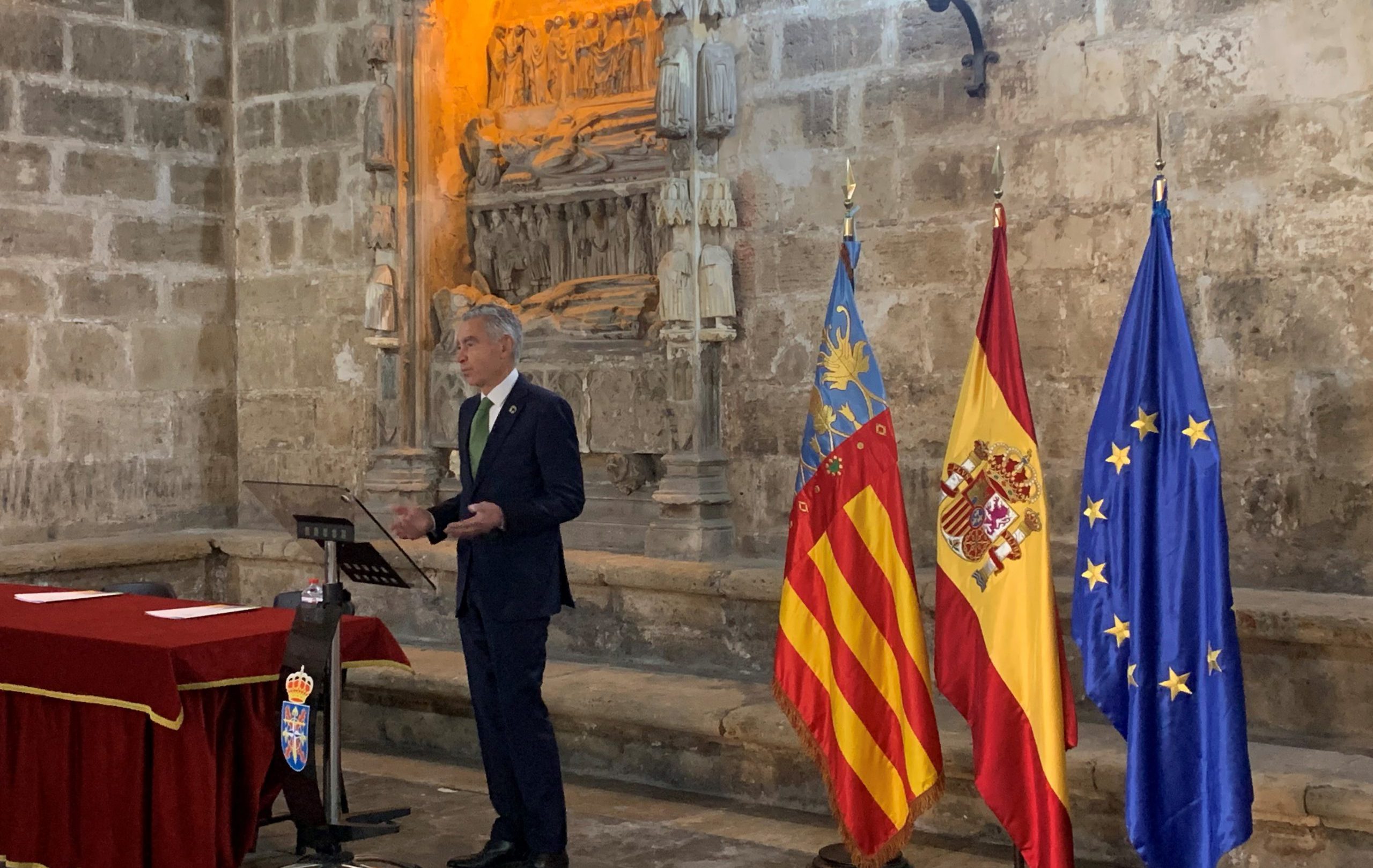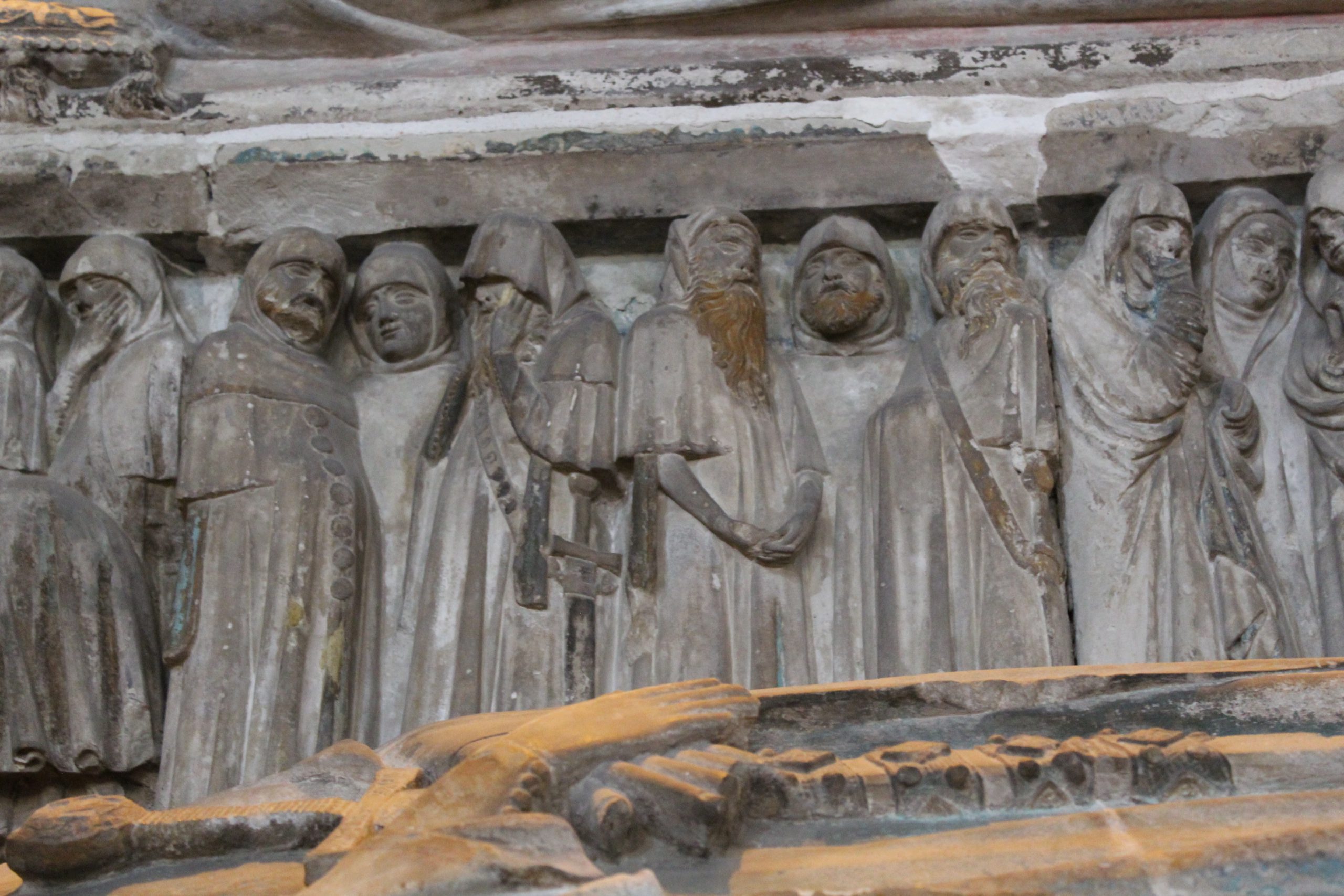- Through its Spanish Foundation, Iberdrola is financing with 55,000 euros the entire project to restore the monument, located in one of the most remarkable buildings in Valencia.
- The restoration work will restore the splendor of the tomb and fix the deterioration caused by the passage of time.
Iberdrola has signed an agreement valued at 55,000 euros to develop a restoration project for the double stone tomb in the Chapter House of the Convent of Santo Domingo, in the former Capitanía General of Valencia, known as the Boil family tomb.
This restoration project will improve the conservation and enhancement of the monument, a work made on calcarenite-type sandstone by an unknown author dating from the 15th century and part of the history of the emblematic building, now the headquarters of the High Readiness Headquarters. The tomb is articulated through of two columns that support an archivolt, has a cinerary, a lower recumbent statue, a lower frieze, an upper recumbent statue, and an upper frieze. The restoration works recover its splendor and fix its deterioration, caused mainly by the passage of time and aspects such as humidity or sudden changes in seasonal temperature.
The restoration of the Boil family tomb is another example of Iberdrola’s commitment to Valencia and its permanent aim to promote the social value of the culture and conservation of the historical and artistic heritage of the region. This was made clear in the agreement signed yesterday in Valencia by the managing director of the Fundación Museo del Ejército, Francisco Ramos Oliver, and the director of the Fundación Iberdrola España, Ramón Castresana.
In addition, the event was attended by the president of the Iberdrola España Foundation, Fernando García, and Lieutenant General Fernando Garcia-Vaquero Pradal, head of the High Readiness Ground Headquarters, who, as host, welcomed the attendees.
The Boil Tomb
The tomb is inside an arcosolium, measuring 4.18 meters high X 1.65 meters wide, and was commissioned by Berenguer Vives Boil in the mid-15th century.
Inside lie the remains of Ramón de Boil Dies, II Lord of Bétera, known as “Old Governor”, murdered on January 6, 1407 and buried in the lower part, and of his son Ramón de Boil Montagut, III Lord of Bétera and Viceroy of Naples in the reign of Alfonso V the Magnanimous, who died in 1458, whose remains are housed in the upper part.
Fundación Iberdrola España carries out interventions in artistic monuments and unique buildings to install or improve indoor and/or outdoor lighting to contribute to the enhancement of historical and artistic heritage and to improve the energy efficiency of these systems.
Since 2010, the Foundation has also been developing an ambitious project for the restoration and maintenance of Romanesque art monuments in Spain and Portugal, the Atlantic Romanesque Plan, a cross-border cooperation project developed together with the Portuguese Secretary of State for Culture and the Regional Government of Castilla y León, whose second phase is progressing well, promoting the sustainable socio-economic growth of the territory, based on its own resources: the people who live there, its natural environment and its cultural heritage.




